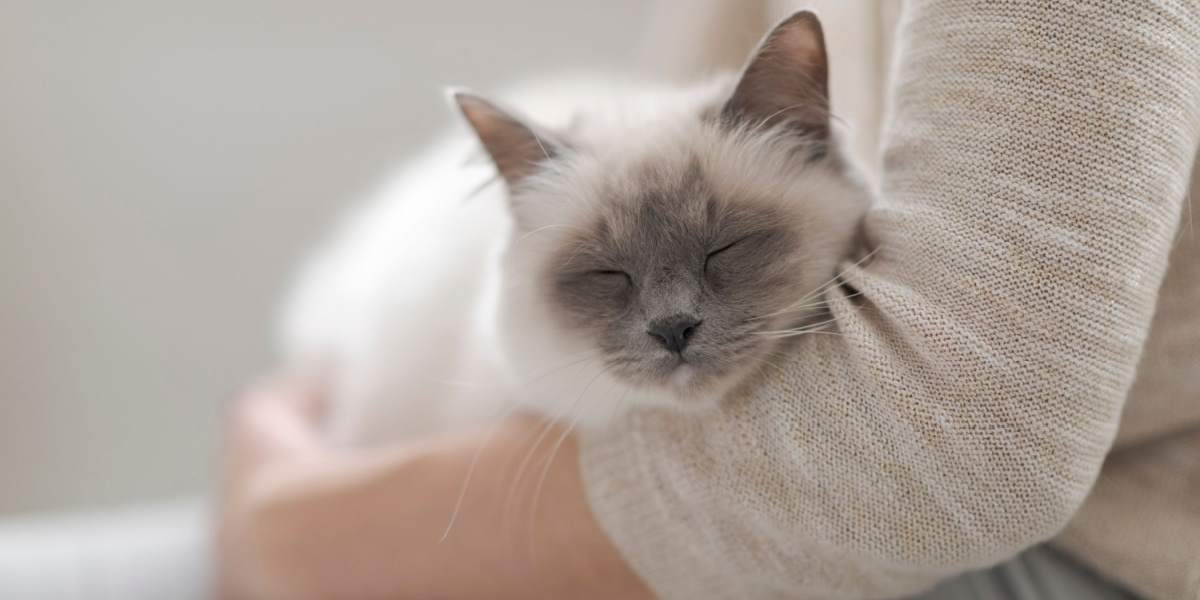
Years ago, separation anxiety was only prevalent in dogs, but now it’s also recognised that cats endure separation-related problems (SRP) despite the perception that cats require less attention and rarely impacted by human absence. In this article, we’ll learn about the causes and treatment of cat separation anxiety.
Probability factors for the development of separation-related problems in cats seem consistent with those of dogs, including pet owners with long work hours, changes in schedules, frequent travel, and permanent loss of a pet or family member.
Sadly, there is little study pertaining to SRP in cats. While case presentations differ from dogs, detection and management of SRP come with challenges to owners, veterinary professionals, and animal behaviourists.
Separation anxiety can be debilitating for both owner and cat. Accurate identification, treatment, and prevention of separation-related problems are important to cat welfare and quality human-cat relationships.
Hypothesized Causes of Separation Related Problems
The myth that ALL cats are aloof and loners isn’t the case.
Cats can form close bonds with owners and are therefore likely to exhibit detachment behaviours and physiological responses due to the owner’s partial or complete absence.
There isn’t a single trigger.
Separation related problems can have various underlying negative emotional motivations relating to fear, anxiety, panic, grief, and over-attachment to people. Interestingly, research has also found that a higher occurrence of SRP was reported in households with two female owners than the remainder of the sampled caregivers.
Clearly, there are many reasons why a cat may develop SRP. Let’s explore a few of the possible causes.
Early Weaning, Abandonment, and Trauma
Separation related problems are often seen in orphaned pets, along with those removed early from their mum and siblings. Ideally, kittens should remain with their natural family up until eight weeks old.
Cats abandoned young and subsequently rescued, together with those suffering a traumatic event, are similarly predisposed to dissociation apprehension.
Genetics
It’s theorized individual genetics can play a role in feline SRP. Pedigree Oriental breeds, such as Siamese and Burmese, could also be more vulnerable to separation difficulties.
Bored Indoor Cats
Research has found that indoor cats with little to do and no toys to play with showed a greater incidence of SRP.
Senior and Disabled Cats
Animals who became disabled or whose circumstances may have changed can also be affected including cats older than 8 years may be susceptible to detachment related problems. Likewise, cats with cognitive decline could also be less competent to deal with the absence of a caretaker and will suffer from SRP.
Needy Hypersensitive Cats
Felines who are hypersensitive to their surroundings and rely solely on their carers for social engagement may become extra clingy when confronted with the owner’s absenteeism. We need to be mindful to not reinforce the needy behaviour through our nervousness.
Does My Cat Have Separation Anxiety?
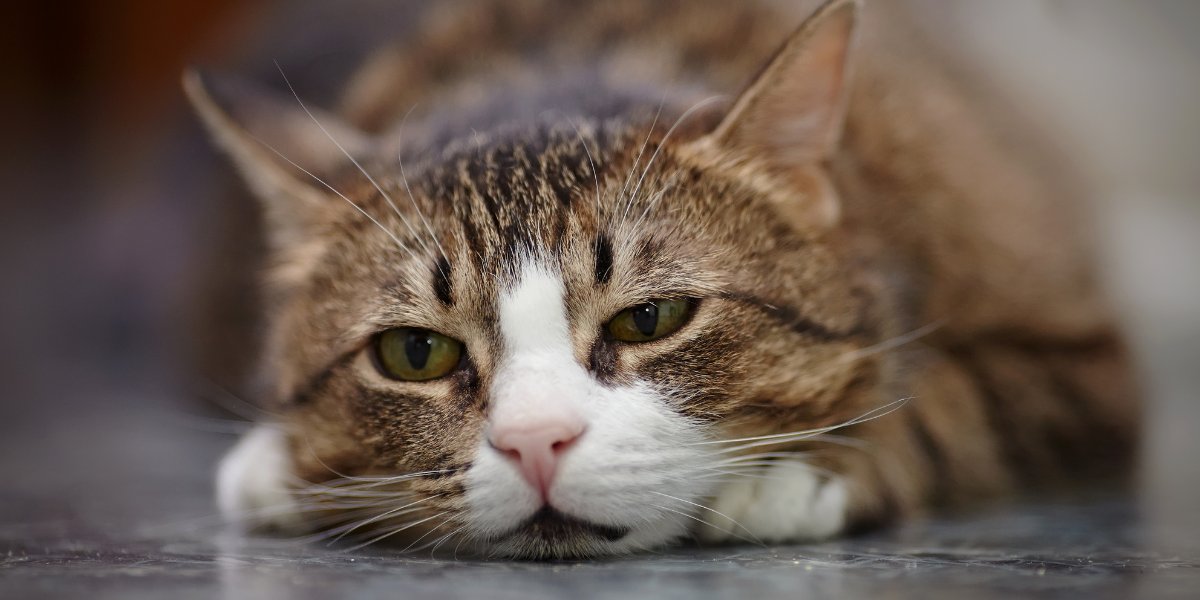
The Covid19 pandemic has highlighted the challenge of change and loss of routine brought to many pets and caretakers. Several moggies, like my Simba, struggle with ever-changing schedules by licking items, whining, and puking upon my arrival.
If you returned to part/full time work and suspect your cat could be suffering symptoms of separation distress, there are a few things you can do to determine whether or not they are showing signs of separation anxiety.
Start keeping records of your cat’s departure and arrival behaviors, any appetite disturbance, and the impact your absence has on your cat. Video surveillance can also be a vital tool within your diagnostic basket.
Symptoms of Separation Anxiety in Cats
Separation apprehension can manifest as clinginess, agitation, distress prior to owner’s departure (shadowing), enthusiastic greetings when owners returns home including problem behaviors such as:
- Destructive behaviour is the most reported sign of SRP (destroying household objects, chewing furniture, knocking items, accessing cabinets, frantic scratching at doors/windows)
- Excessive vocalization (crying, howling, moaning and meowing)
- Inappropriate elimination (mainly urine marking on owner’s bed, however also urination or defecation on sofas, owner’s clothes, below furniture, and urination in the kitchen sink)
- Eating too quickly or loss of appetite (Anorexia) while owner is away
- Vomiting (food or hair included in spew)
- Depression
- Inactivity
- Aggressive tendencies
- Exorbitant licking or self-grooming
It’s vital to note that chronic stressors have the potential to contribute to clinical signs beyond the separation period (Johnson, 2020).
Cat Separation Anxiety Treatment
Comprehensive diagnosis is required to deal with and treat SRP; beginning with a health check to rule out underlying health conditions combined with a behavioral evaluation.
Concurrent environmental and behavioral modification together with pheromones, supplements and massage therapy is also required to manage and treat separation related challenges.
Environmental Enhancement
Environmental enrichment is a key component of feline wellbeing. Review current habitat and prospective opportunities to express normal feline behaviors.
Imitate hunting and foraging actions with the utilisation of food puzzles, place vertical structures to elicit climbing along with scratching posts to preserve claws, mark territory and remain fit.
Stimulate daily play and predatory behaviour with toys, catnip, ropes, bedding, cardboard boxes and weekly clicker training.
Departure Cues
Don’t ignore your cat or sneak off leaving them realising they’ve been left alone!
Departures and arrivals should be as calm as possible; excessive display may trigger overstimulation and aggravate anxiety. Exiting cues should provide positive, reliable and predictable human-cat social interaction through training cues like “go to mat”, “go to towel”, or “go to bedâ€.
This may be accomplished by luring with a treat followed by brushing for cats who enjoy it. Once the mat is linked with relaxation, gradual departures can be introduced.
Ultimately, the mat should serve function as an area of rest, teach coping skills and enable the cat to interact positively with their environment (Johnson, 2020).
Fear Free Fortress
Set up a dedicated sanctuary for high-stress, low-activity cats which can accommodate food, water, bedding, high gateway areas, scraping stations and litter box (not in close proximity). Ensure the area meets basic needs equally solace with the addition of a pheromone diffuser, owner’s scented clothes and cat soothing music.
Allow your cat to have choice and willingly explore the fortress by making a positive association with the use of treats and play.
Trigger Desensitization
Certain activities like gathering keys, coat, bag or wearing shoes prior to leaving can trigger anxiety. If your cat shadows you or become nervous whenever you pick or hold these items, it should be helpful to desensitise them by staging these activities at unplanned times without departing.
Repeat training sessions several times (morning, afternoon, evening) with a brief outing, gradually increase time spent outdoors till they’re calm.
Appeasing Products
Several calming products can be utilized to reduce anxiety and promote feelings of reassurance and wellbeing.
A synthetic appeasing pheromone derived from nurturing queens (chemical produced within the mammary sulcus) called Feliway Multicat is also beneficial for anxious, fearful cats and for tension reduction in multi-cat homes.
Pet calming ThunderShirt applied gently with constant pressure may assist with separation angst if your cat tolerates it.
Nutraceuticals and Herbs
Studies revealed that short term supplementation of L-tryptophan for dogs and cats led to reduction of stress-related behaviours and decrease in anxiety signs when combined with a low protein diet (Pure Animal 2014). It should be discussed along with your vet and used with caution if combined with other drugs.
Supplementation of Zylkene (alpha-casozepine, a milk-derived bioactive peptide) is reported to give an anxiety lowering effect just like the drug diazepam (Valium) without the side effects of diazepam use. It’s easy to administer to cats with their food with little or no reported side effects.
Certain flower essence blends and Bach Flower Remedy are natural, safe and may possibly aid during truancy. Consult your vet prior to administration of nutraceuticals just in case of contraindications!
Cat Massage Therapy
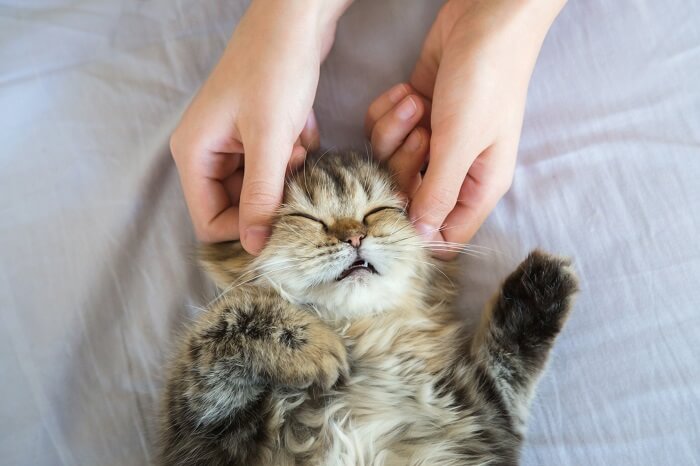
Regular massage can help to alleviate stress, including separation anxiety in cats.
Daily or weekly Feline Therapeutic Massage may help reduce stress related behavioral problems together with environmental alteration and supplementation. Owners can be taught to apply massage at home which can further reinforce the owner-pet bond.
Medication
In extreme cases, anti-anxiety medication could also be a necessity after consultation together with your veterinarian or veterinary behaviorist.
Feline separation related problems can be challenging to diagnose thanks to limited understanding and case studies.
The correlation between separation distress and devotion is an area of continual research in both dogs and cats.
Despite the lack of research, there’s an enormous collection of canine data along with possible interventions. Record keeping, patience, and cooperation with the veterinary health care team can help reduce SRP.
Also Read:Â The 10 Best Cat Slow Feeders & Puzzle Feeders
Frequently Asked Questions:
How do you prevent separation anxiety in cats?
Acquire or raise well-socialised kittens, early experiences affect resilience and coping mechanism. Continuation of positive exposure, introduction to novel things and folks will help develop a confident, stress-free cat.
Cats like predictability, establish a daily routine with little disruption. Keep them engaged and supply safe outdoor access which allows to express natural activities.
Remain calm when leaving and returning home, avoid making a fuss then getting emotional.
How do you help a cat with separation anxiety?
Behaviour modification through gradual desensitization to owners’ arrivals and departures coupled with counterconditioning and environmental improvement may help a cat with separation distress. In severe cases and if anxiety perseveres medication must be dispensed by your vet.
Will a second cat help with separation anxiety?
Don’t get a further pet until your resident cat is calm during your absence. Another pet needing undivided love and focus can worsen matters.
-
Animal, P. (n.d.). Mood Food. Australia: Natural Pet Health. Retrieved January 22, 2021
-
Claude Beata, E. B. (2007, March-April). Effect of alpha-casozepine (Zylkene) on anxiety in cats. Journal of Veterinary Behavior, 40-46. Retrieved January 21, 2021, from sciencedirect.com
-
Daiana de Souza Machado, P. M. (2020, April 15). Identification of separation-related problems in domestic cats: A questionnaire survey. (M. U. Carolyn J. Walsh, Ed.) PLOS ONE. Retrieved January 15, 2021, from https://journals.plos.org/plosone/article?id=10.1371/journal.pone.0230999
-
ESVCE. (2010). European Veterinary Behaviour Meeting. European Veterinary Behaviour Congress (pp. 122-126). Hamburg, Germany: ESVCE. Retrieved January 18, 2021, from http://www.ecawbm.com/wp-content/uploads/2017/11/Proceedings-2010-low-res.pdf
-
Fagen, L. R. (n.d.). Separation-Related Disorders and the Differences Between Dogs and Cats. USA: Today's Veterinary Practice. Retrieved January 17, 2021, from https://todaysveterinarypractice.com/behavior/separation-related-disorders-differences-dogs-cats/
-
Fraser, A. F. (2012). Feline Behaviour and Welfare. (S. Hulbert, Ed.) CAB International. Retrieved January 20, 2021
-
Heath, J. B. (2005). Behavioural Problems in Small Animals. Elsevier Saunders. Retrieved January 20, 2021
-
Johnson, D. (2020, September). Separation Related Problems in Cats. The IAABC Journal, 1-10. Retrieved January 17, 2020
-
Marek, R. (2019, July 22). They’re Not Loners: Cats Can Have Separation Anxiety, Too. (F. F. Homes, Compiler) Retrieved January 23, 2021, from https://www.fearfreehappyhomes.com/theyre-not-loners-cats-can-have-separation-anxiety-too/


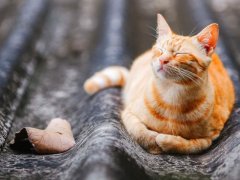

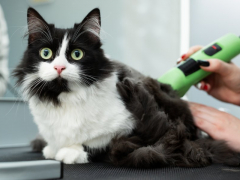


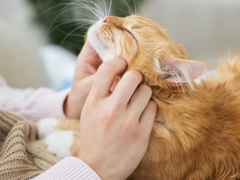
I use Phytomaxx CBD oil everyday & my cat has done great with anxiety as well as urinary problems! I use the Phytomaxx cuz it’s the best CBD oil on the market! Also use Uromaxx for urinary issues as well! Got rid of my cats E. coli as well!
I had an accident and was hospitalized for 7 days. My neighbors took care of my “kids” during that time. When I got home, I was in bed and heard my older cat “crying” as he walked through the house. I felt really badly, because he was looking for me. I called out to him and we “cuddled” for a while. We lost his buddy two years ago and, dumb me, I didn’t even think to let him smell the box Tucker was buried in before burying him. Puff mourned for 2 months or more. When I’d come home, he’d meet me at the door, talking non-stop, most likely thinking I was bringing Tucker home. Just broke my heart. Took him a while to accept his new “friend”, Graycee. He’s still not as happy with her as he was Tucker, but at least he’s got company.
Try giving him Phytomaxx CBD oil! It works wonders!
I had an accident and was hospitalized for 7 days. My neighbors took care of my “kids” during that time. When I got home, I was in bed and heard my older cat “crying” as he walked through the house. I felt really badly, because he was looking for me. I called out to him and we “cuddled” for a while. We lost his buddy two years ago and, dumb me, I didn’t even think to let him smell the box Tucker was buried in before burying him. Puff mourned for 2 months or more. When I’d come home, he’d meet me at the door, talking non-stop, mots likely thinking I was bringing Tucker home. Just broke my heart. Took him a while to accept his new “friend”, Graycee. He’s still not as happy with her as he was Tucker, but at least he’s got company.
Great article! I felt like I was reading about my cat. I’m currently dealing with this issue with one of my cats. Will try some of these tips and hopefully ease his separation anxiety.
What about my separation anxiety when I have to leave my cat?
There are few things you can do to overcome your anxiety like install a webcam to feel closer to your pet, organize for a cat minder to spend time with your kitty while you’re at work, kitten proof your home to eliminate potential hazards and build resilience by having a strong social supportive cat group and loving family.